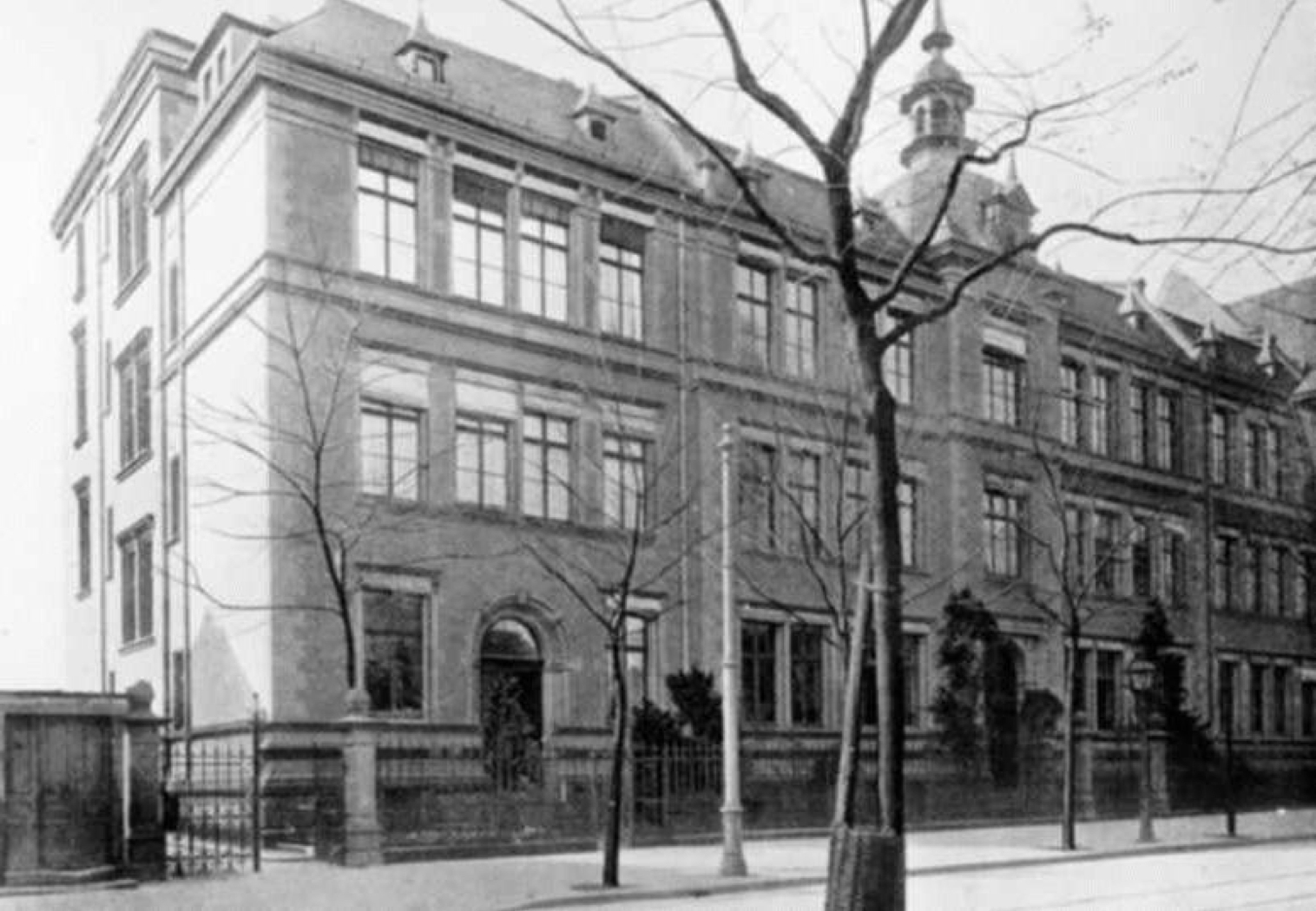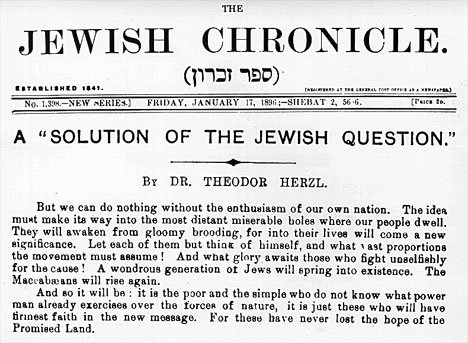|
Samson Rafael Hirsch
Samson Raphael Hirsch (; June 20, 1808 – December 31, 1888) was a German Orthodox rabbi best known as the intellectual founder of the ''Torah im Derech Eretz'' school of contemporary Orthodox Judaism. Occasionally termed ''neo-Orthodoxy'', his philosophy, together with that of Azriel Hildesheimer, has had a considerable influence on the development of Orthodox Judaism. Hirsch was rabbi in Oldenburg, Emden, and was subsequently appointed chief rabbi of Moravia. From 1851 until his death, Hirsch led the secessionist Orthodox community in Frankfurt am Main. He wrote a number of influential books, and for a number of years published the monthly journal ''Jeschurun'', in which he outlined his philosophy of Judaism. He was a vocal opponent of Reform Judaism, Zionism, and similarly opposed early forms of Conservative Judaism. Early years and education Hirsch was born in Hamburg, which was then a part of Napoleonic France. His father, Raphael Arye Hirsch, though a merchant, devoted m ... [...More Info...] [...Related Items...] OR: [Wikipedia] [Google] [Baidu] |
Khal Adath Jeshurun
Khal Adath Jeshurun, officially K'hal Adath Jeshurun, abbreviated as KAJ, is an Orthodox Jewish community and synagogue located at 85-93 Bennett Avenue in the Washington Heights neighborhood of Manhattan in New York City, New York, United States. The community includes a high proportion of Ashkenazi German Jews and follows the Western Ashkenazic rite, unlike most Ashkenazic synagogues in the United States, that follow the Eastern Ashkenazic ('' Polish'') liturgical rite. The Western Ashkenazic rite covers the community's liturgical text, practices, and melodies. The community uses the Rödelheim Siddur Sfas Emes edited by Wolf Heidenheim and Seligman Baer, although the community's rite varies in some places from Rödelheim. The community has an affiliated synagogue in the heavily Orthodox Jewish neighborhood of Monsey, and there is a synagogue that follows the minhagim of KAJ in Lakewood. History The community is a direct continuation of the pre-Second World War J ... [...More Info...] [...Related Items...] OR: [Wikipedia] [Google] [Baidu] |
Zionism
Zionism is an Ethnic nationalism, ethnocultural nationalist movement that emerged in History of Europe#From revolution to imperialism (1789–1914), Europe in the late 19th century that aimed to establish and maintain a national home for the Jews, Jewish people, pursued through the colonization of Palestine (region), Palestine, a region roughly corresponding to the Land of Israel in Judaism, with central importance in Jewish history. Zionists wanted to create a Jewish state in Palestine with as much land, as many Jews, and as few Palestinian people, Palestinian Arabs as possible. Zionism initially emerged in Central Europe, Central and Eastern Europe as a secular nationalist movement in the late 19th century, in reaction to newer waves of antisemitism and in response to the Haskalah, or Jewish Enlightenment. The arrival of Zionist settlers to Palestine during this period is widely seen as the start of the Israeli–Palestinian conflict. The Zionist claim to Palestine was base ... [...More Info...] [...Related Items...] OR: [Wikipedia] [Google] [Baidu] |
Samson Raphael Hirsch (ZR002)
Samson Raphael Hirsch (; June 20, 1808 – December 31, 1888) was a German Orthodox Judaism, Orthodox rabbi best known as the intellectual founder of the ''Torah im Derech Eretz'' school of contemporary Orthodox Judaism. Occasionally termed ''neo-Orthodoxy'', his philosophy, together with that of Azriel Hildesheimer, has had a considerable influence on the development of Orthodox Judaism. Hirsch was rabbi in Oldenburg in Holstein, Oldenburg, Emden, and was subsequently appointed chief rabbi of Moravia. From 1851 until his death, Hirsch led the secessionist Orthodox community in Frankfurt am Main. He wrote a number of influential books, and for a number of years published the monthly journal ''Jeschurun'', in which he outlined his philosophy of Judaism. He was a vocal opponent of Reform Judaism, Zionism, and similarly opposed early forms of Conservative Judaism. Early years and education Hirsch was born in Hamburg, which was then a part of First French Empire, Napoleonic France. ... [...More Info...] [...Related Items...] OR: [Wikipedia] [Google] [Baidu] |
Abraham Geiger
Abraham Geiger (Hebrew: ''ʼAvrāhām Gayger''; 24 May 181023 October 1874) was a German rabbi and scholar who is considered the founding father of Reform Judaism and the academic field of Quranic studies. Emphasizing Judaism's constant development through its history and universalist traits, Geiger sought to re-formulate received forms and design what he regarded as a religion compliant with modern times. Biography As a child, Geiger started doubting the traditional understanding of Judaism when his studies in classical history seemed to contradict the biblical claims of divine authority. At the age of seventeen, he began writing his first work, a comparison between the legal style of the Mishnah and Biblical and Talmudic law. He also worked on a dictionary of Mishnaic (Rabbinic) Hebrew. Geiger's friends provided him with financial assistance which enabled him to attend the University in Heidelberg, to the great disappointment of his family. His main focus was centered on the ... [...More Info...] [...Related Items...] OR: [Wikipedia] [Google] [Baidu] |
Semicha
''Semikhah'' () is the traditional term for rabbiinic ordination in Judaism. The original ''semikhah'' was the formal "transmission of authority" from Moses through the generations. This form of ''semikhah'' ceased between 360 and 425 CE. Since then, ''semikhah'' has continued in a less formal way; throughout Jewish history, there have been several attempts to reestablish the classical ''semikhah''. The title of "rabbi" has "proliferated greatly over the last century". Nowadays, ''semikhah'' is also granted for a comparatively limited form of ordination, bestowing the authority to apply ''Halakha'' in specific Jewish settings rather than across the Jewish people writ large. In non- Orthodox Jewish religious movements, rabbinical education often emphasizes the modern roles of rabbis, such as preaching, teaching, counseling, and pastoral work. In recent times, relatedly, some institutions grant ordination for the role of ''hazzan'' (cantor), extending the "investiture" grante ... [...More Info...] [...Related Items...] OR: [Wikipedia] [Google] [Baidu] |
Mannheim
Mannheim (; Palatine German language, Palatine German: or ), officially the University City of Mannheim (), is the List of cities in Baden-Württemberg by population, second-largest city in Baden-Württemberg after Stuttgart, the States of Germany, state capital, and Germany's List of cities in Germany by population, 21st-largest city, with a population of over 315,000. It is located at the border with Rhineland-Palatinate. The city is the cultural and economic centre of the Rhine-Neckar, Germany's Metropolitan regions in Germany, seventh-largest metropolitan region, with nearly 2.4 million inhabitants. Mannheim is located at the confluence of the Upper Rhine and the Neckar in the Kurpfalz (region), Kurpfalz (Electoral Palatinate) region of northwestern Baden-Württemberg. The city lies in the Upper Rhine Plain, Germany's warmest region, between the Palatine Forest and the Oden Forest. Mannheim forms a continuous urban zone of around 500,000 inhabitants with Ludwigshafen am Rhe ... [...More Info...] [...Related Items...] OR: [Wikipedia] [Google] [Baidu] |
Talmud
The Talmud (; ) is the central text of Rabbinic Judaism and the primary source of Jewish religious law (''halakha'') and Jewish theology. Until the advent of Haskalah#Effects, modernity, in nearly all Jewish communities, the Talmud was the centerpiece of Jewish culture, Jewish cultural life and was foundational to "all Jewish thought and aspirations", serving also as "the guide for the daily life" of Jews. The Talmud includes the teachings and opinions of thousands of rabbis on a variety of subjects, including halakha, Jewish ethics, Jewish philosophy, philosophy, Jewish customs, customs, Jewish history, history, and Jewish folklore, folklore, and many other topics. The Talmud is a commentary on the Mishnah. This text is made up of 63 Masekhet, tractates, each covering one subject area. The language of the Talmud is Jewish Babylonian Aramaic. Talmudic tradition emerged and was compiled between the destruction of the Second Temple in 70 CE and the Arab conquest in the early seve ... [...More Info...] [...Related Items...] OR: [Wikipedia] [Google] [Baidu] |
Tanakh
The Hebrew Bible or Tanakh (;"Tanach" . ''''. ; ; or ), also known in Hebrew as (; ), is the canonical collection of scriptures, comprising the (the five Books of Moses), the |
Hakham
''Hakham'' (or ''Chakam(i), Haham(i), Hacham(i), Hach''; ) is a term in Judaism meaning a wise or skillful man; it often refers to someone who is a great Torah scholar. It can also refer to any cultured and learned person: "He who says a wise thing is called a ''Hakham'', even if he be not a Jew." Hence, in Talmudic-Midrashic literature, wise gentiles are commonly called ' ("wise men of the nations of the world"). In Sephardic usage, ''hakham'' is a synonym for " rabbi". In ancient times ''Hakham'' as an official title is found as early as the first Sanhedrin, after the reconstruction of that body, when the Hadrianic religious persecutions had ceased. In addition to the Simeon ben Gamliel, two other scholars stood at the head of the Sanhedrin, namely Nathan the Babylonian as '' Av Beit Din'' and Rabbi Meir as ''hakham''. Another hakham mentioned by name was Simon, the son of Judah ha-Nasi, who after the death of his father officiated as ''hakham'', with his elder brother ... [...More Info...] [...Related Items...] OR: [Wikipedia] [Google] [Baidu] |
Altona, Hamburg
Altona (), also called Hamburg-Altona, is the westernmost Boroughs and quarters of Hamburg#Boroughs, urban borough (''Bezirk'') of the Germany, German States of Germany, city state of Hamburg. Located on the right bank of the Elbe river, Altona had a population of 270,263 in 2016. From 1640 to 1864, Altona was under the administration of the Denmark, Danish monarchy. Altona was an independent borough until 1937. History Danish period Altona was founded in 1535 as a village of fishermen in what was then Holstein-Pinneberg. In 1640, Altona came under Denmark-Norway, Danish rule as part of Holstein-Glückstadt, and in 1664 was granted town rights, municipal rights by the Danish King Frederik III of Denmark, Frederik III, who then ruled in personal union as Duke of Holstein. Altona was one of the Danish monarchy's most important harbor towns. The railway from Altona to Kiel, the Hamburg-Altona–Kiel railway (), was opened in 1844. Imperial period The wars between Denmark ... [...More Info...] [...Related Items...] OR: [Wikipedia] [Google] [Baidu] |






